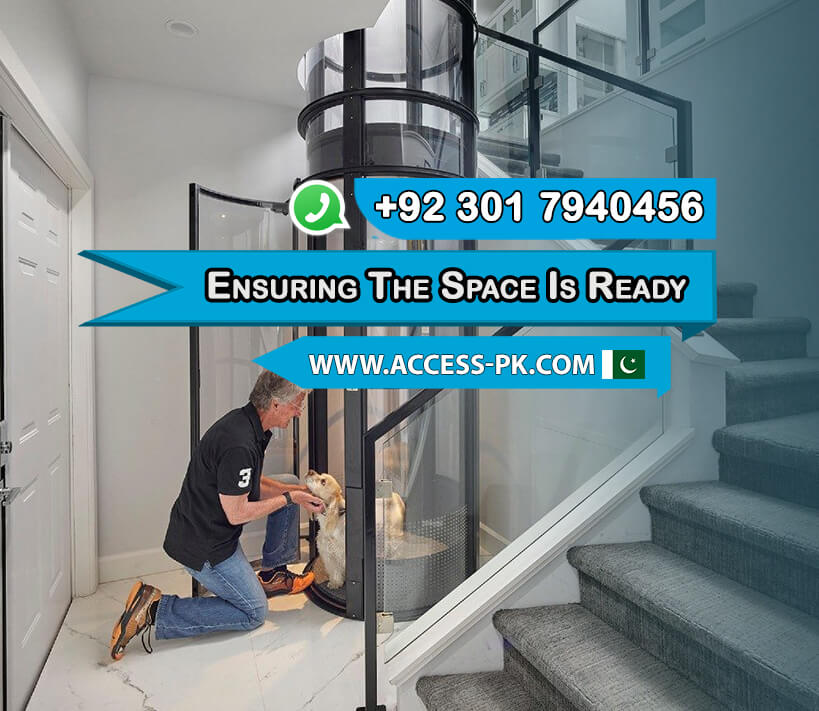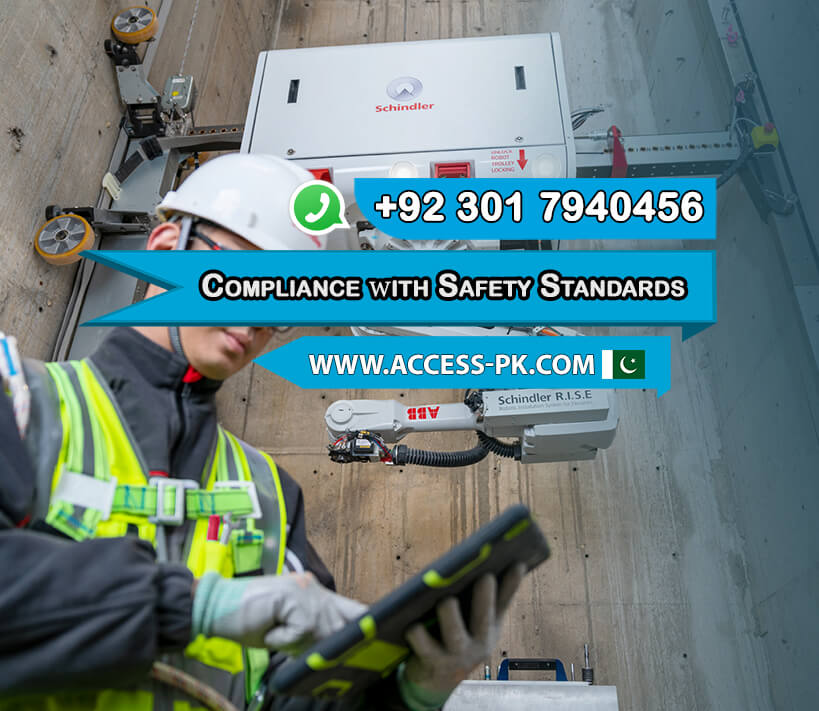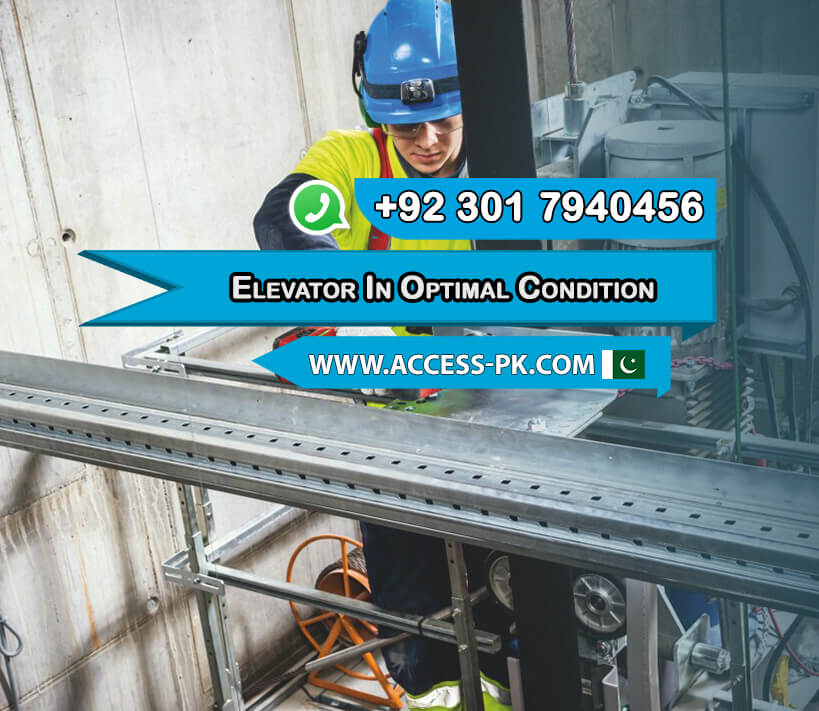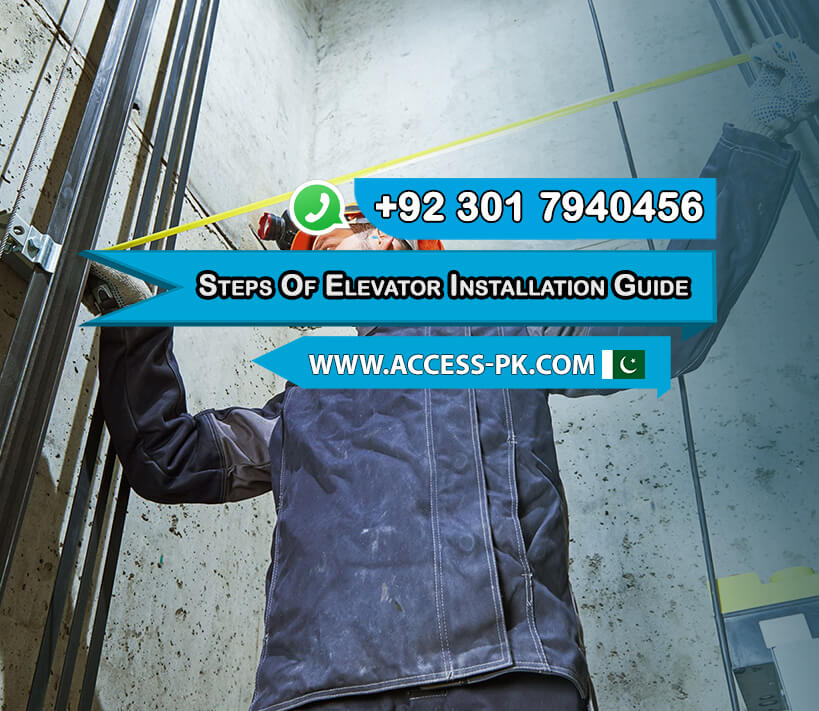Elevators are essential components in modern buildings, ensuring accessibility, convenience, and efficient transportation of people and goods. Installing an elevator requires precision, planning, and adherence to safety regulations. Access Technologies, owned by Imran Rafi, is a leading provider of elevator solutions in Pakistan, offering expertise in seamless elevator installation for buildings of all sizes. In this Elevator Installation Guide, we will break down each step of the installation process, ensuring a smooth and efficient experience for building owners and developers.
Pre-Installation Planning and Assessment: For a Successful Installation

Before starting any elevator installation project, thorough planning and assessment are crucial. The pre-installation phase lays the groundwork for the entire project and begins with a detailed evaluation of the building’s structure and space. This phase includes:
Structural Integrity Analysis:
Engineers examine the existing structure to ensure it can support the elevator. This involves checking the building’s foundation, load-bearing capabilities, and the overall layout to identify any challenges that may arise during installation.
Space Allocation and Design:
Determining the most suitable location for the elevator shaft and machinery is essential. The team must evaluate the building’s floor plan to decide the best spot for the elevator, ensuring it fits seamlessly and operates efficiently.
Elevator Type Selection:
Different buildings require different types of elevators. For instance, a residential building might need a smaller, quieter passenger elevator, while a commercial building might require a larger capacity freight elevator. The planning stage allows the team to choose the right elevator based on the building’s function, usage, and future needs.
Access Technologies leverages its years of experience in elevator installation in Pakistan to meticulously plan each project, ensuring it meets the building’s unique requirements. The company offers customized solutions that align with the specified budget and timeline.
Get Free QuotesSite Preparation: Ensuring the Space Is Ready for Elevator Installation

The next crucial step in the elevator installation process is site preparation. This phase equips the designated space properly to accommodate the elevator system and all its associated components. Proper site preparation prevents delays during installation and reduces the risk of any unforeseen issues. Key steps involved include:
Clearing the Installation Area:
The area where the elevator shaft will be constructed must be cleared of any obstacles. This may involve demolishing walls, removing debris, or adjusting existing structures to make room for the elevator system.
Reinforcing the Building’s Structure:
Depending on the elevator’s weight and size, the building may need additional structural reinforcement. The shaft must be sturdy enough to support the weight of the elevator car, counterweights, and mechanical systems.
Electrical and Power Setup:
Elevators require dedicated electrical power for their operation. This includes setting up the wiring, installing electrical panels, and ensuring the power supply can handle the elevator’s demands. Proper electrical systems are essential for smooth operation and to avoid future complications.
Compliance with Regulations: It is also vital to ensure that the installation site complies with local and international building codes and safety standards. This ensures the elevator is safe, operational, and legal for use in the building.
By following these steps, Access Technologies prepares the site fully, reduces the risk of installation delays, and ensures a smooth, safe process.
Get Free QuotesElevator System Installation: Assembling Core Components for Smooth Operation

Once the site is properly prepared, the installation of the core elevator components begins. This is the most technical phase of the project and involves assembling the various parts that make up the elevator system. The team must install each part carefully and test it to ensure proper functionality. Key elements of the installation process include:
Constructing the Elevator Shaft:
The elevator shaft is where the elevator car will travel. The construction team must build the shaft to exact specifications, making sure it is wide and deep enough to accommodate the elevator’s dimensions. They must also reinforce it to handle the elevator’s weight and movements. Installing the Mechanical Systems: The elevator’s mechanical systems include the motor, pulleys, counterweights, and cables. These components must be installed correctly to ensure the elevator operates smoothly and safely. Precision is essential during this phase, as any mistakes can lead to operational inefficiencies or safety hazards.
Setting up the Control Systems:
The installation team must install and calibrate the control panel, which manages the elevator’s movements and functions, to ensure it operates effectively. Modern elevators include advanced control systems that provide additional features such as destination dispatch and energy-saving functions.
Safety Features Installation:
Elevators come with several safety features, such as emergency brakes, door sensors, and backup power systems. Installers must integrate these components during installation to ensure the elevator operates safely.
Access Technologies handles all aspects of the installation with care, installs each system accurately, and meets all safety standards, establishing it as a trusted name for elevator installation in Pakistan.
Get Free QuotesFinalizing the Installation and Ensuring Compliance with Safety Standards

Once the elevator system is fully installed, the next step is testing and inspection. This phase ensures that the elevator functions properly, adheres to all safety standards, and is ready for use. Rigorous testing procedures are followed to guarantee reliability and performance:
Load Testing:
The elevator must be able to carry the weight it is rated for. Load testing involves running the elevator with weights that simulate the maximum load it will carry during normal use. This ensures the system can handle its operational capacity without issues.
Operational Testing:
The elevator’s movements are tested to ensure smooth and accurate travel between floors. This includes verifying the speed, stopping accuracy, and safety mechanisms such as emergency braking systems.
Code Compliance Inspection:
The elevator must meet local building codes and safety regulations. An official inspection verifies compliance with all relevant standards. This is critical to confirming that the elevator is legally authorized for use in the building.
Final Adjustments:
After testing, any minor adjustments or improvements are made to fine-tune the elevator system. These may include calibrating the speed, adjusting door sensors, or making safety adjustments.
After passing all tests and inspections, the team officially approves the elevator for operation, confirming it meets both safety and functional standards.
Get Free QuotesPost-Installation Support and Maintenance: Your Elevator in Optimal Condition

The installation process does not end once the elevator is operational. Ongoing maintenance and support are essential for keeping the elevator in optimal working condition, ensuring safety, and prolonging its lifespan. Key aspects of post-installation support include:
Routine Inspections:
Regular inspections are necessary to identify any wear and tear on components, ensuring the elevator is functioning efficiently. During these inspections, technicians check the mechanical systems, control systems, and safety features.
Scheduled Maintenance:
The team should establish regular maintenance schedules to keep the elevator in top condition. This includes lubrication of mechanical parts, calibration of control systems, and testing of safety features.
Repairs and Upgrades:
Over time, certain components may need repairs or replacements. Access Technologies offers timely repair services, and when necessary, they can upgrade the elevator system with the latest technology to improve performance, efficiency, and safety.
Emergency Support: In the event of a malfunction, having access to emergency support is crucial. Access Technologies provides 24/7 customer service and emergency repair services to ensure minimal downtime.
By investing in regular maintenance and service, building owners can ensure their elevators continue to provide reliable service for years to come. Access Technologies offers comprehensive post-installation services, making them a top choice for elevator installation in Pakistan and ongoing support.
Get Free QuotesConclusion: A Smooth and Efficient Elevator Installation Process
Installing an elevator in a building is a complex process that requires detailed planning, technical expertise, and adherence to safety standards. This Elevator Installation Guide has outlined the key steps involved, from pre-installation planning to post-installation support. With Access Technologies, building owners in Pakistan can rest assured that their elevator installation project will meet the highest standards, delivering long-term reliability, safety, and efficiency.
Get Free Quotes



